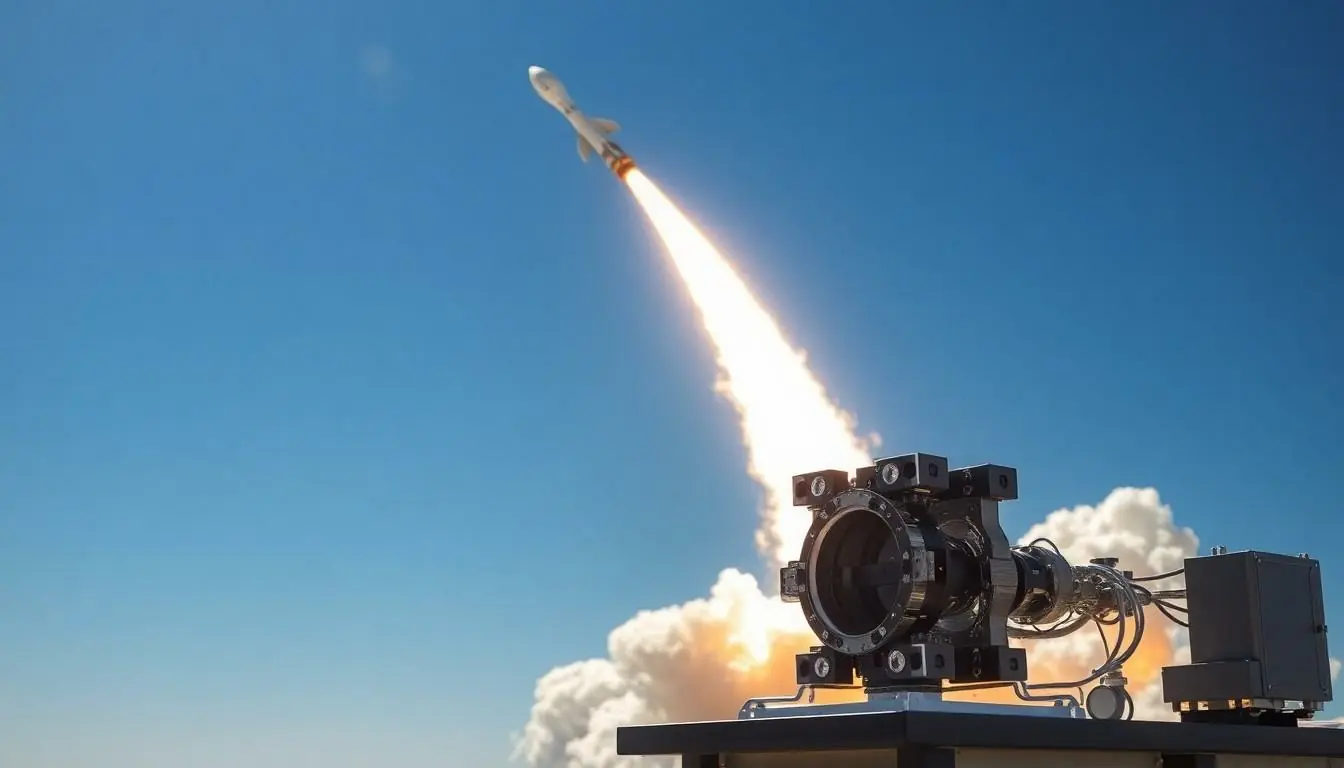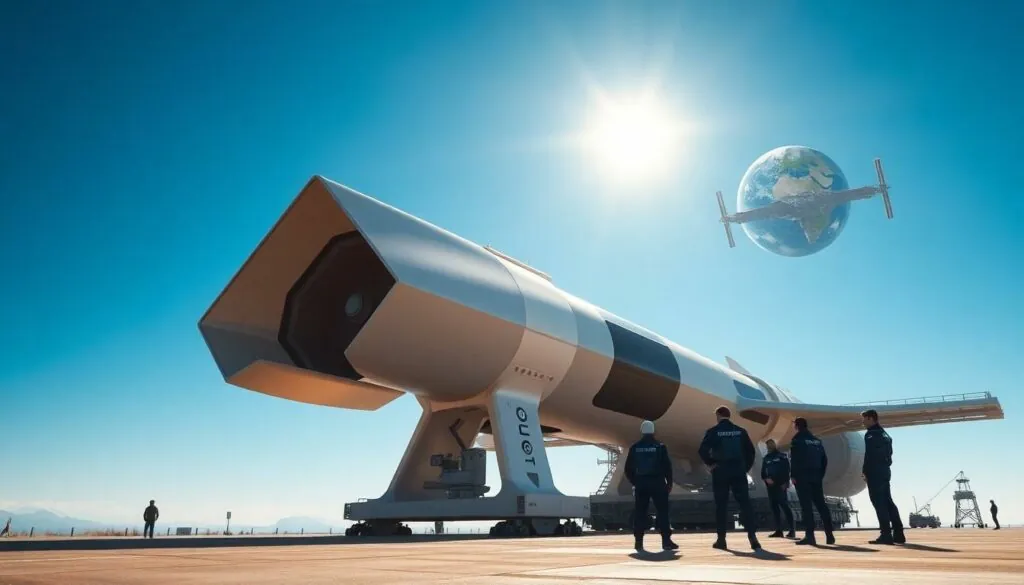Table of Contents
ToggleSpace travel isn’t just for astronauts anymore; it’s becoming the next big thing for everyone. With advancements in flight and technology, humanity is gearing up to explore the cosmos like never before. Imagine a future where your vacation involves a quick hop to Mars instead of just the beach. Sounds wild, right?
Overview of Space Travel Advancements
Significant advancements in space travel technology continue to reshape industry standards. Companies like SpaceX and Blue Origin lead the charge, developing reusable rocket systems that dramatically reduce launch costs. Reusability allows for more frequent trips to low Earth orbit, making space missions more economical and sustainable.
Innovations in propulsion systems enhance the speed and efficiency of spacecraft. Ion propulsion systems and nuclear thermal engines are being tested, promising faster travel times to destinations like Mars. Enhanced speed will shorten the duration of interplanetary missions, making the possibility of colonizing other planets more feasible.
Artificial intelligence plays a crucial role in improving navigation and safety. AI systems help analyze data and predict potential issues during flights, thus reducing human error. They contribute to mission planning by optimizing routes and fuel consumption.
Advancements in life support systems also enhance the viability of long-duration space travel. Closed-loop systems recycle air and water, significantly increasing sustainability for missions that venture farther from Earth. This capability is essential for supporting human life on missions to Mars and beyond.
Collaboration between government and private sectors fosters innovation. Initiatives such as NASA’s Commercial Crew Program exemplify this partnership, encouraging private entities to develop crewed spacecraft. This collaboration yields technological breakthroughs essential for future deep space exploration.
As advancements continue to emerge, the landscape of space travel undergoes rapid transformation, making once-distant dreams achievable. The potential for space tourism and exploration shifts from a concept to a reality, inviting more participation in the realm of space exploration.
Innovations in Flight Technology

Space travel technology is witnessing groundbreaking innovations that shape its future. Two major advancements include reusable rockets and electric propulsion systems.
Reusable Rockets
Reusable rockets significantly lower launch costs by allowing multiple flights from a single unit. SpaceX pioneered this approach, demonstrating successful landings and re-flights of its Falcon 9 and Falcon Heavy rockets. Blue Origin also contributed with its New Shepard suborbital vehicle, designed for tourism. Each successful reuse reduces the overall expense of placing payloads in orbit. The reusability model increases launch frequency, making space more accessible for research and exploration. Companies continuously enhance designs to improve reliability and performance, further transforming the economics of space missions.
Electric Propulsion Systems
Electric propulsion systems, including ion and Hall effect thrusters, offer efficient and sustainable space travel compared to conventional chemical propulsion. These systems utilize electricity to accelerate ions, providing greater thrust-to-weight ratios and fuel efficiency for long-duration missions. NASA’s Dawn spacecraft effectively utilized ion propulsion to reach and study the asteroid belt. Consequently, these systems enable spacecraft to explore deeper into the solar system, making journeys to destinations like Mars more feasible. Development continues in this field, with advancements focusing on increasing thrust levels and operational durations, promising even more efficient space travel in the future.
Advancements in Spacecraft Design
Innovations in spacecraft design are pushing the boundaries of space travel. Companies are focusing on creating more efficient, flexible, and sustainable spacecraft.
Modular Spacecraft Concepts
Modular spacecraft concepts allow for customizable designs tailored to mission needs. These systems facilitate the addition or removal of components, adapting to various exploration tasks. Spacecraft can consist of modules for crew, cargo, or scientific instruments, optimizing functionality for specific missions. This approach enhances costs by enabling partial upgrades rather than complete overhauls. Each module can operate independently, improving mission resilience. Organizations like NASA and private firms are examining these adaptable designs to boost future missions.
Advanced Life Support Systems
Advanced life support systems are critical for long-duration space missions. These systems include technologies designed to recycle air and water, ensuring sustainable environments for astronauts. Innovations involve bio-regenerative systems that use plants to produce oxygen and purify air. These improvements significantly extend the time crews can spend in space without resupply. Engineering challenges remain, yet the development of effective life support enhances mission safety and reduces reliance on Earth. Agencies are investing resources to refine these technologies further, aiming for sustainable human presence on Mars and beyond.
The Role of AI in Space Exploration
Artificial intelligence plays a crucial role in enhancing capabilities within space exploration. It streamlines various processes, making missions safer and more efficient.
Autonomous Navigation Systems
Autonomous navigation systems utilize AI to guide spacecraft during missions. These systems adapt to real-time conditions, avoiding obstacles and optimizing flight paths. Crew members can focus on other critical tasks while the AI manages navigation. Sophisticated algorithms assess data from onboard sensors, ensuring precision in navigating through complex environments. Advanced technology significantly reduces the need for constant human intervention, increasing the chances of mission success. As a result, AI-driven navigation supports both deep space missions and orbital operations.
AI-Driven Data Analysis
AI-driven data analysis accelerates the processing of vast amounts of information collected during missions. Machine learning algorithms identify patterns and anomalies in data, providing valuable insights into celestial phenomena. These insights enable scientists to make informed decisions about mission adjustments and future explorations. Data from various sources, including telescopes and rovers, gets analyzed efficiently, leading to breakthroughs in understanding space. Collaboration between AI systems and scientists enhances research capabilities, transforming raw data into actionable intelligence. Consequently, AI plays a pivotal role in advancing space exploration knowledge.
Future Technologies on the Horizon
Innovative technologies are shaping the future of space travel. Companies developing reusable rockets, like SpaceX and Blue Origin, contribute to reducing costs and increasing launch frequency. This transformation makes space travel more accessible for research and tourism. Electric propulsion systems, such as ion and Hall effect thrusters, provide efficient, sustainable options for deep space exploration.
Advancements in spacecraft design enhance exploration capabilities. Modular spacecraft concepts offer customizable solutions that adapt to diverse mission requirements. These designs improve functionality and cost-effectiveness, enabling teams to tackle various tasks with greater resilience. Advanced life support systems play a critical role in long-duration missions, utilizing technologies to recycle air and water.
Bio-regenerative systems represent a significant innovation in sustaining long-term missions. These systems integrate plants to produce oxygen, extending the duration crews can operate in space without resupply. Additional advancements include the integration of artificial intelligence to boost mission efficiency. AI optimizes navigation processes, guiding spacecraft while allowing crew members to concentrate on important tasks.
Autonomous systems, driven by AI, improve safety and streamline operations. Real-time navigation adjustments enhance mission adaptability, while AI-driven data analysis accelerates the understanding of vast information gathered during missions. Emerging technologies promise to revolutionize space travel, bringing the dream of space tourism and exploration closer to reality. They’ll drive human presence on Mars and beyond, emphasizing the importance of continuous innovation in the field.
The advancements in flight and technology are transforming the future of space travel. As reusable rockets and innovative propulsion systems become the norm, the dream of accessible space exploration is within reach. The integration of AI and advanced life support systems enhances mission safety and sustainability, paving the way for longer journeys.
With ongoing collaboration between private companies and government agencies, the potential for space tourism and deeper exploration is expanding. These technological breakthroughs not only make space travel more feasible but also inspire a new generation of explorers eager to venture beyond Earth. The horizon of space travel is bright, and its possibilities are limitless.





